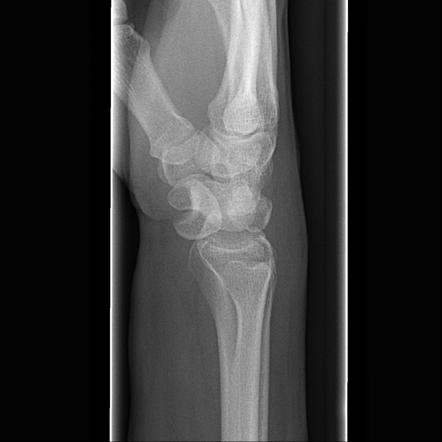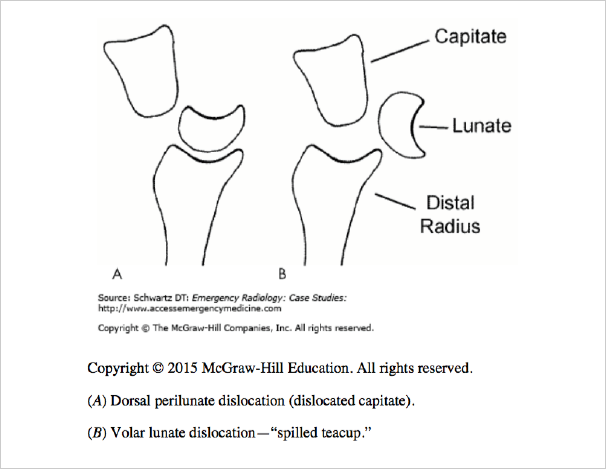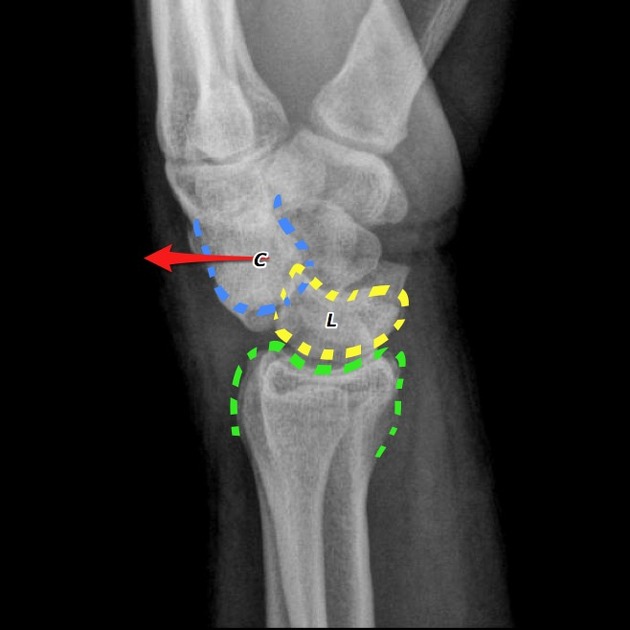A 36F presenting with wrist pain after a fall on an outstretched hand. She has pain and swelling over the dorsal-radial aspect of her hand. Her xray is below, what is the diagnosis?
It’s the spilled tea cup sign, but can you remember which dislocation it stands for?? It is the lunate dislocation.
Both the perilunate and the lunate dislocations occur because of forceful dorsiflexion and impact on an outstretched hand, usually in the setting of a fall or from a MVC. This force produces a pattern of injury with progressive instability. The first stage, and least severe, is a scapholunate dissociation (Terry Thomas sign). With more force, more ligaments are torn away from the carpal bones and a perilunate dislocation results. And with even more force still, the dorsal radiocarpal ligament is torn and the lunate is dislocated volarly.
Both dislocations are best view on lateral wrist radiographs. Perilunate dislocations will show the capitate not sitting in the cup of the lunate, but dorsally displaced. Furthermore, a line through the radius and lunate with not intersect the capitate
A lunate dislocation will show the spilled teacup sign with the lunate displaced volarly. The lunate will not articulate with the capitate or radius.
Both injuries will require emergent reduction and likely surgical repair. Complications include arthritis, median nerve dysfunction and decreased ROM.
Sources:
Escarza R, Loeffell MF, Uehara D. “Wrist Injuries.” Chapter 266. Tintinalli’s Emergency Medicine: A Comprehensive Study Guide 7e. Eds. Judith E. Tintinalli, et al. New York, NY: McGraw-Hill, 2011
http://www.accessemergencymedicine.com



